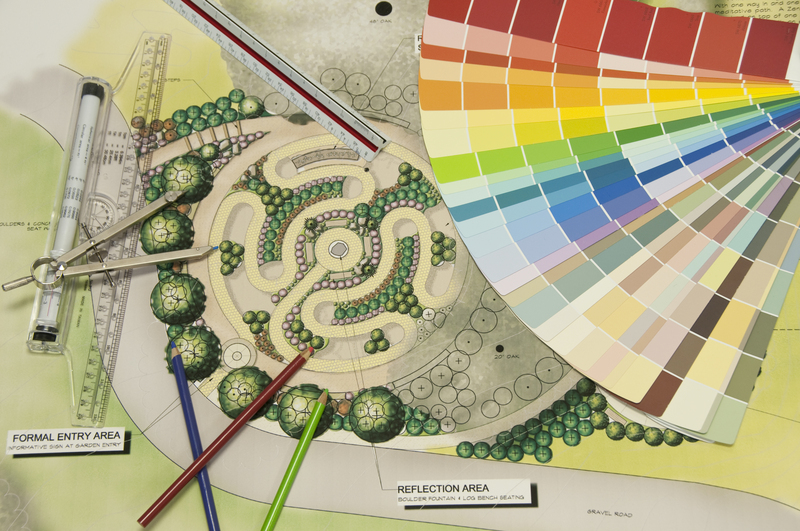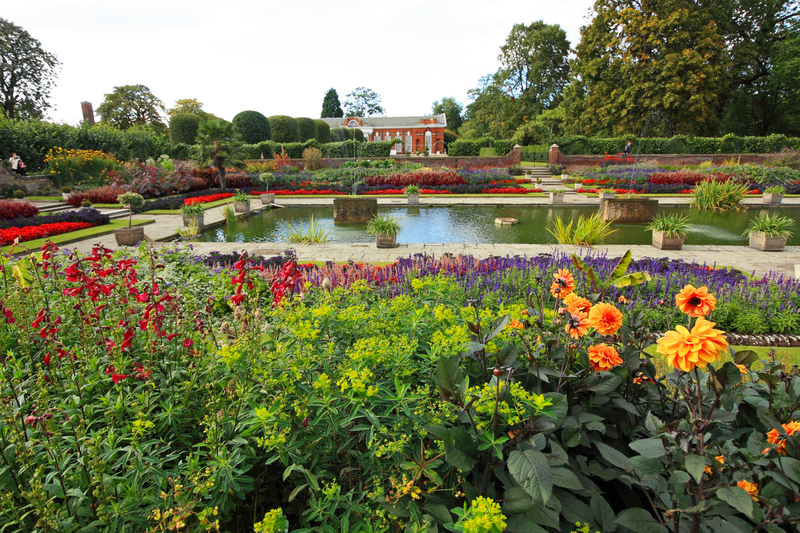Step-by-Step Guide to a Child-Friendly Garden Wonderland
Posted on 21/06/2025
Step-by-Step Guide to a Child-Friendly Garden Wonderland
A garden can be more than just a patch of green. With the right planning and creativity, you can transform your outdoor space into a child-friendly garden wonderland that inspires adventure, curiosity, and learning. In this comprehensive SEO-friendly guide, you'll discover how to create a safe, educational, and magical garden paradise tailored specifically for children.
Why Create a Child-Friendly Garden Wonderland?
A kid-friendly garden wonderland offers numerous physical, mental, and emotional benefits for children. Exposing kids to nature early on nurtures a love for the outdoors, fosters responsibility through gardening tasks, and provides a safe space for energetic play and exploration. Plus, a child-focused garden becomes a family hub for learning, laughter, and making memories.
- Physical Health: Outdoor play helps develop motor skills, coordination, and fitness.
- Mental Wellbeing: Nature reduces stress and increases imagination.
- Cognitive Growth: Gardening teaches responsibility, cause and effect, and environmental stewardship.

Step 1: Planning Your Child-Friendly Garden Space
Before you dig in, a thoughtfully designed layout is key. Consider the age of your children, their interests, your available space, and your budget.
Assess Your Space and Safety Needs
- Location: Choose areas visible from the home for easy supervision.
- Hazards: Remove poisonous plants, sharp tools, and toxic chemicals.
- Boundaries: Fence the area or use clear borders like hedges or raised beds.
Tip: Involve your children in the planning process. Ask for their garden wishes--fairy corners, bug hotels, or vegetable patches--and incorporate their ideas whenever possible.
Step 2: Designing Zones for Play and Learning
A successful family-friendly garden wonderland includes distinct zones:
- Active Play Area: For running, jumping, and games.
- Imagination Station: Spaces for creative or themed play, like a fairy garden, pirate ship, or dinosaur dig.
- Discovery Zone: A place to observe birds, insects, and plants up close.
- Growing Space: Dedicated beds or containers for children to plant, water, and harvest.
- Quiet Retreat: A cozy nook for reading or lying back to watch the clouds.
Integrating Kid-Friendly Landscape Features
- Mazes: Use plants, stones, or pathways to create simple labyrinths.
- Water Elements: Small, safe water tables, birdbaths, or fountains add sensory fun.
- Hiding Spots: Teepees made from sticks, willow tunnels, or bean pole tents offer adventure and privacy.
Add touches of wonder by incorporating wind chimes, stepping stones, or colorful garden art crafted by your kids.
Step 3: Choosing Plants for a Kid-Safe Garden Wonderland
Plant selection is critical for a safe and stimulating environment. The best plants for a child-friendly garden are non-toxic, resilient, and interactive. Mix a variety of textures, colors, and scents to engage all the senses.
Safe and Sensory-Friendly Plants
- Edible Plants: Strawberries, snap peas, carrots, and tomatoes are great for little hands.
- Fragrant Flowers: Lavender, sweet peas, and mint delight the nose.
- Touch-Friendly: Lamb's ear (soft), fountain grass (feathery), and sunflowers (tall and cheerful).
- Butterfly and Bee Magnets: Marigolds, zinnias, and cosmos support pollinators and invite observation.
Avoid the following plants: Foxglove, oleander, dieffenbachia, datura, and daffodils, as these can be toxic if ingested.
Step 4: Adding Fun and Educational Garden Features
The hallmark of a child-optimized garden wonderland is the presence of playful accessories and learning opportunities.
- Raised Planter Boxes: Allow little ones to garden at their level.
- Chalkboard Walls: Give space for artistic expression and garden notes.
- Bug Hotels and Bird Houses: Encourage respect for wildlife and observation skills.
- Weather Stations: Track rainfall, wind, and temperature together.
- Stepping Stone Paths: Lead to secret corners and inspire imagination.
- Mud Kitchens: A dedicated spot for messy, creative outdoor play.
- Outdoor Musical Instruments: Wind pipes, xylophones, or homemade tins to bang and shake.
Building a Fairy Garden or Themed Mini-World
Kids are enchanted by miniature scenes. Dedicate a corner to a fairy village, dinosaur land, or pirate cove with plants, pebbles, small figurines, and tiny signs.
Step 5: Ensuring Safety in Your Kid-Friendly Garden Paradise
Practical Child-Safety Measures
- Soft Surfaces: Use mulch, sand, or lawn for play zones to cushion falls.
- Non-Slip Paths: Lay safe, even paving for easy walking.
- Secure Fencing: Check for escape routes and neighbourhood hazards.
- Tool and Chemical Storage: Lock up garden tools, fertilizers, and pesticides.
- Shade and Hydration: Provide shaded areas and keep water available during playtime.
Remember: Regularly inspect garden furniture and play equipment for loose parts or splinters.
Step 6: Involving Kids in Gardening Activities
One of the best ways to make your outdoor play garden for children a success is to involve them in every stage--planning, planting, maintaining, and harvesting.
Fun and Educational Tasks for Kids
- Planting Seeds: Let them choose flowers, veggies, or herbs to sow.
- Watering: Assign a watering can and routine.
- Weeding and Mulching: Teach plant care basics while encouraging respect for living things.
- Harvesting: Celebrate the reward of picking their own produce.
- Creating Signs: Paint and label plant markers or zone signs.
Step 7: Maintenance Tips for a Lasting Garden Wonderland
- Choose Low-Maintenance Plants: Native and drought-resistant options reduce workload and support local wildlife.
- Rotate Play Features: Keep the garden interesting by updating play elements each season.
- Encourage Nature Care: Get kids involved in composting, water conservation, and wildlife protection.
Seasonal Activities and Updates
- Spring: Plant new seeds, clean up winter debris, and install bird feeders.
- Summer: Mulch beds, harvest early crops, and tend to pollinator plants.
- Autumn: Gather seeds, compost leaves, and plant bulbs for spring.
- Winter: Add bird food, explore winter wildlife, or craft garden art indoors.
Inspiration: Real-Life Child-Friendly Garden Wonderland Ideas
- Enchanted Story Paths: Install signposts with book excerpts along a winding garden trail.
- Themed Garden Beds: Create pizza beds (tomatoes, basil, oregano), pollinator havens, or rainbow flower patches.
- Nature Art Stations: Set up outdoor easels or supply natural materials for art projects.
- Obstacle Courses: Use logs, rocks, and stepping stones for balance activities.
- Campfire Circles: Establish a safe fire pit zone for storytelling and marshmallow roasting.

The Long-Term Benefits of a Child-Focused Garden Wonderland
A child-centered garden wonderland is more than pretty paths and playful features--it's an investment in your child's development. By encouraging hands-on learning, sensory exploration, and imaginative play, you are helping cultivate resilience, responsibility, and a lifelong appreciation for nature.
- Healthy Lifestyle: Active, outdoor play fights screen fatigue and builds habits that last a lifetime.
- Cognitive Development: Exploring life cycles, weather, and ecosystems broadens young minds.
- Creativity: The garden is a canvas for games, storytelling, art, and invention.
- Family Bonding: Gardening together strengthens relationships and communication.
Conclusion: Your Garden Wonderland Awaits!
Transforming your backyard into a child-friendly garden wonderland is a rewarding journey for the whole family. By following these step-by-step strategies, you'll nurture your child's curiosity, promote healthy habits, and craft an outdoor space brimming with magic and possibility.
Start small and grow together--the best gardens aren't just planted in soil, but in happy memories that last a lifetime.

